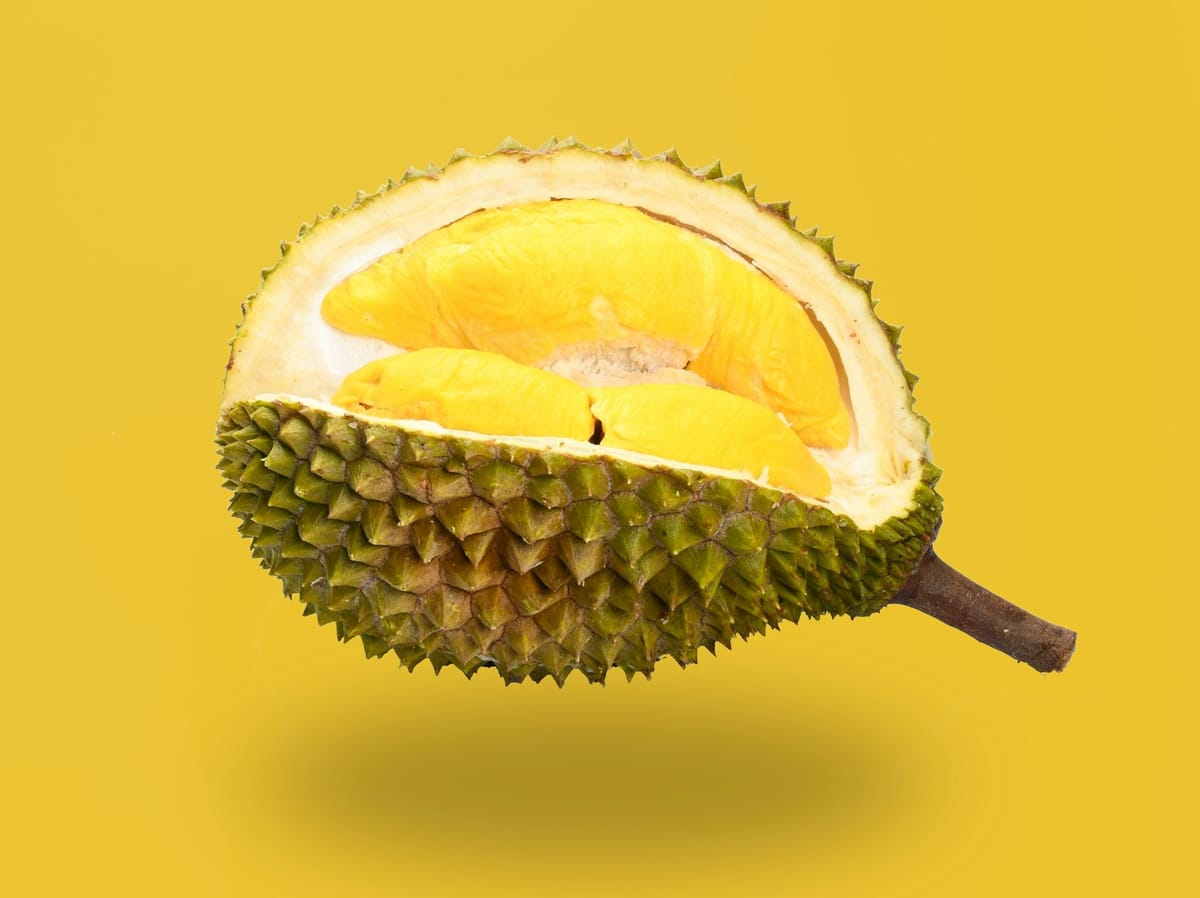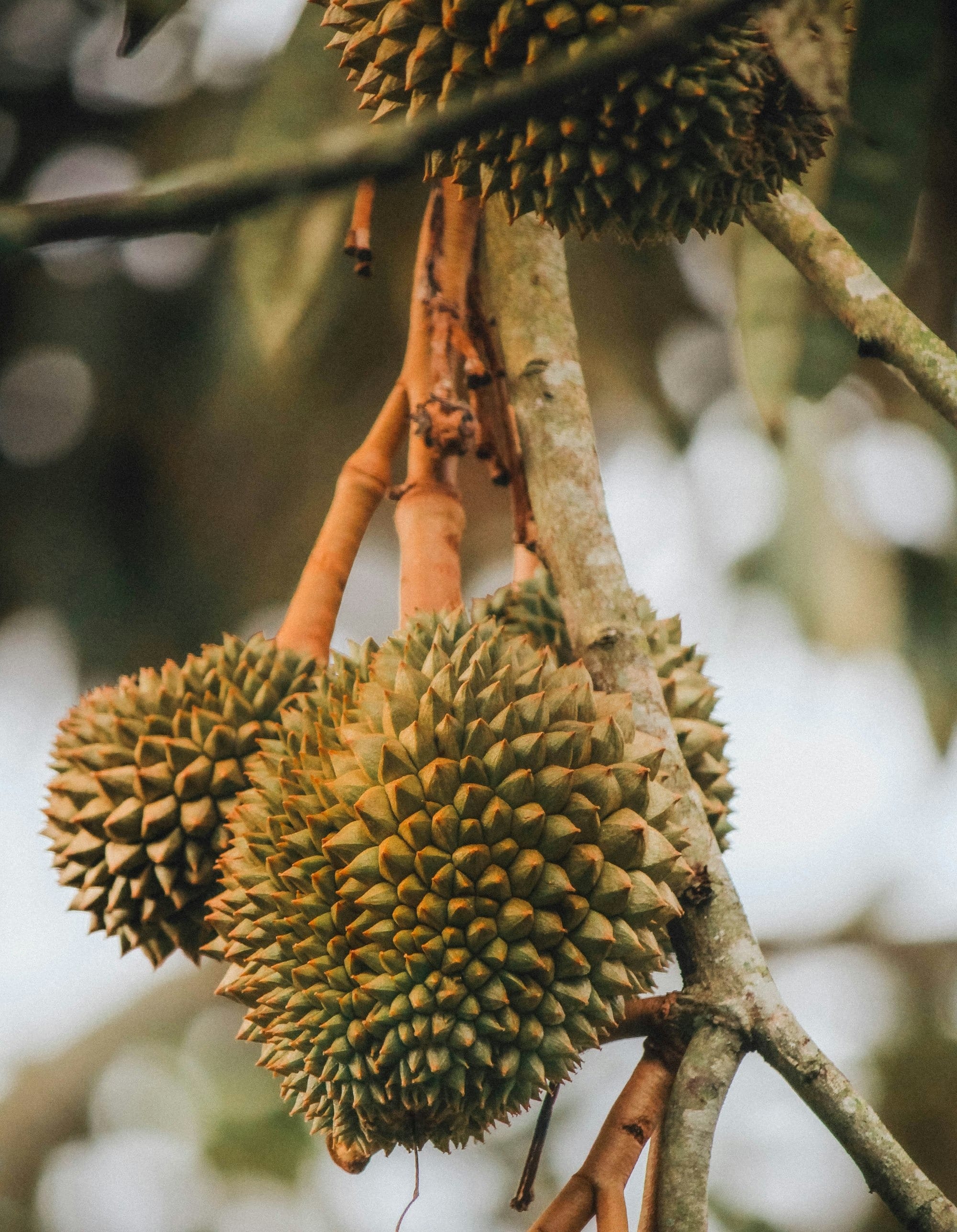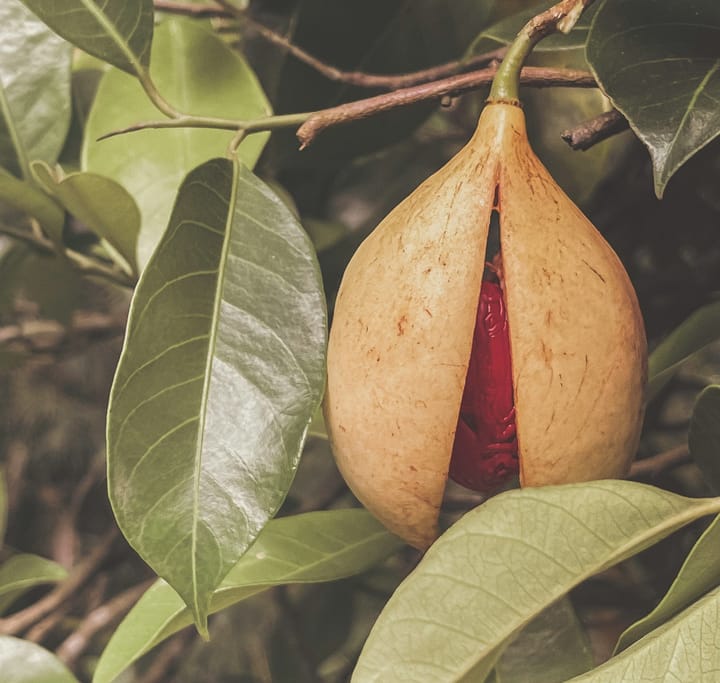Durian: What Makes This Fruit So Expensive?
Renowned as Southeast Asia's "king of fruits," durian commands extraordinary prices that can reach hundreds of dollars per fruit. From its challenging cultivation to its complex harvesting requirements, discover why this thorny delicacy carries such a remarkable price tag.

For centuries, durian has held the prestigious title of "King of Fruits" across Southeast Asia.
This fascinating fruit, with its distinctive thorny exterior and complex flavor profile, commands premium prices in markets worldwide.
Understanding why this controversial fruit has become one of the most expensive and sought-after delicacies requires exploring its unique characteristics, cultivation challenges, and cultural significance.
What is Durian?
Durian (Durio zibethinus) is a tropical fruit native to Southeast Asia, particularly Malaysia, Indonesia, and Thailand.
The fruit is immediately recognizable by its large size, reaching up to 12 inches in length, and its formidable thorny husk.
Inside, the fruit contains several segments of creamy, custard-like flesh surrounding large seeds. The texture of the flesh varies among different varieties, ranging from soft and cream-cheese-like to firm and fibrous.
What truly sets durian apart is its powerful aroma, which has led to its ban in many public spaces, hotels, and transportation systems across Asia.
The smell is so potent that it can permeate through the thick rind even before the fruit is opened.
The complex aroma compounds create a unique sensory experience that divides opinions dramatically.
While enthusiasts describe the scent as a harmonious blend of sweet almond, caramel, and vanilla notes, others compare it to rotting onions or gasoline. This polarizing nature has only added to its mystique and cultural significance.
Why is Durian So Expensive?

The high price of durian stems from a complex interplay of agricultural, environmental, and market factors.
The cultivation of durian requires specific tropical conditions that limit its growing regions.
These trees need temperatures consistently between 22°C and 35°C, along with high humidity levels throughout the year.
The soil must be rich in organic matter and well-draining, as durian trees are sensitive to both drought and waterlogging.
Additionally, the trees require protection from strong winds, as their shallow root systems make them vulnerable to toppling.
Perhaps the most significant factor in durian's expense is the time investment required.
Durian trees take between 20 to 30 years to reach full maturity and optimal fruit production.
During this period, farmers must carefully maintain the trees through regular pruning, fertilization, and pest management.
Even once mature, each tree produces fruit only once or twice per year, during specific seasons that typically last just two to three months.
The harvesting process itself adds another layer of complexity and cost.
Unlike many fruits that can be picked when nearly ripe, durians must be allowed to naturally fall from the tree at peak ripeness.
This requires farmers to monitor their orchards constantly during the harvest season, often collecting fallen fruits multiple times throughout the day and night.
The thorny exterior of the fruit makes handling challenging and time-consuming, requiring protective equipment and expertise to process safely.
Durian Seasons: When to Find the Best Fruit
The availability of durian follows distinct seasonal patterns across Southeast Asia, with slight variations depending on the region and local climate conditions. In Malaysia, the main durian season typically occurs twice a year.
The primary season runs from June to September, with peak harvests in July and August. A smaller season follows from December to February, though the fruit quality and quantity may vary during this period.
Thailand experiences its major durian season from April to August, with the most prized fruits appearing in May and June. The southern regions of Thailand may see a second, smaller harvest from August to September.
Indonesian durian seasons vary by region due to the country's vast geographical spread. In Java, the peak season usually falls between November and January, while Sumatra sees its best harvests from August to September.
Climate change has begun to affect traditional durian seasons, sometimes causing unexpected flowering periods and irregular fruit production.
This unpredictability has contributed to price fluctuations and has made timing the market increasingly challenging for both farmers and consumers.
Despite these variations, the highest quality fruits, particularly premium varieties like Musang King and Black Thorn, consistently command top prices during peak seasons when these durian characteristic flavors and textures are most pronounced.
Premium Durian Varieties

Among the numerous durian varieties, several stand out for their exceptional quality and corresponding premium prices.
The Musang King (D197) variety, originating from Malaysia, is often considered the gold standard of durians. Its flesh exhibits a deep golden-yellow color and maintains a perfect balance between creamy texture and complex flavor profile.
The taste combines sweet and bitter notes with subtle hints of caramel and fermented alcohol. What makes Musang King particularly valuable is its high flesh-to-seed ratio and consistent quality.
These characteristics, combined with its distinctive star-shaped pattern at the base, have helped establish its reputation as the most sought-after variety, commanding prices of $30-50 per kilogram in international markets.
The Black Thorn (D200) variety has emerged as a strong competitor to Musang King in recent years.
This variety, primarily grown in Penang, Malaysia, produces fruit with striking deep orange-red flesh that's extraordinarily creamy in texture.
Its flavor profile is notably complex, featuring wine-like notes that develop as the fruit ripens.
The limited production area and growing conditions specific to Black Thorn contribute to its premium status, with prices often reaching $40-60 per kilogram.
Another notable premium variety is the Red Prawn (D175), known for its unique reddish-orange flesh and distinctive flavor profile.
The texture is softer and more fibrous than Musang King or Black Thorn, with a sweet taste that carries subtle alcoholic undertones.
While slightly less expensive than its premium counterparts, Red Prawn still commands significant prices in the market, typically ranging from $20-35 per kilogram.
Cultural Significance and Nutritional Value
In Southeast Asian cultures, durian transcends its status as mere fruit to become a cultural icon.
Traditional Chinese medicine attributes warming properties to durian, and it's often associated with prosperity and luxury.
The fruit plays a central role in social gatherings and festivities, with durian-tasting sessions becoming increasingly popular social events, particularly in urban areas.
Despite its reputation as a rich, indulgent fruit, durian offers surprising nutritional benefits.
The flesh is packed with healthy fats and contains more protein than most fruits. It's also rich in essential vitamins including B-complex vitamins, vitamin C, and vitamin E.
The high potassium content supports heart health, while its fiber content aids digestion.
Various antioxidants present in durian contribute to its potential health benefits, though consumption should be moderated due to its high caloric content.
Selecting Your Perfect Durian
Choosing an exceptional durian requires engaging all your senses in a careful evaluation process that experienced durian enthusiasts have refined over generations.
Understanding how to interpret the fruit's subtle signals will help you identify the perfect specimen at its peak of ripeness.
The Sound Test
When you gently shake a durian, you're actually conducting an acoustic assessment of its internal state.
The ideal fruit produces a distinctive sound - not quite a rattle, but rather a subtle movement that suggests the flesh has reached optimal separation from the shell.
This indicates the flesh has developed the prized creamy texture that durian lovers seek.
Aromatic Assessment
The characteristic scent of a durian serves as a critical indicator of its readiness. A properly ripened fruit releases a complex aroma that, while unmistakably strong, should maintain a certain refinement.
The fragrance should be pronounced but not overwhelming - think of it as the fruit's way of announcing its readiness to be enjoyed.
Visual Indicators
The thorny exterior of a durian tells its own story of ripeness. Look for spikes that show a transition from vibrant green to a brownish hue at their tips.
This natural color progression indicates the fruit has matured appropriately on the tree before harvesting.
The Weight Factor
Perhaps counterintuitively, a durian becomes lighter as it reaches peak ripeness.
This occurs because the fruit's internal moisture content gradually decreases as it ripens, concentrating the flavors and developing that sought-after creamy consistency.
Durian Dry Matter Measurement for Export
Measuring dry matter in durians is like finding out how much "stuff" is left when all the water is removed.
Think of it as weighing what makes the fruit sweet, creamy, and nutritious. Farmers used to cut open fruits and dry pieces in ovens, but now they use special light scanners that can check durians without damaging them.
Good durians like Malaysia's Musang King have at least 32% dry matter, which means they're perfectly ripe with the best flavor and texture.
It become the international benchmark for premium durian quality, particularly for export markets where consistency and optimal eating experience are essential.


